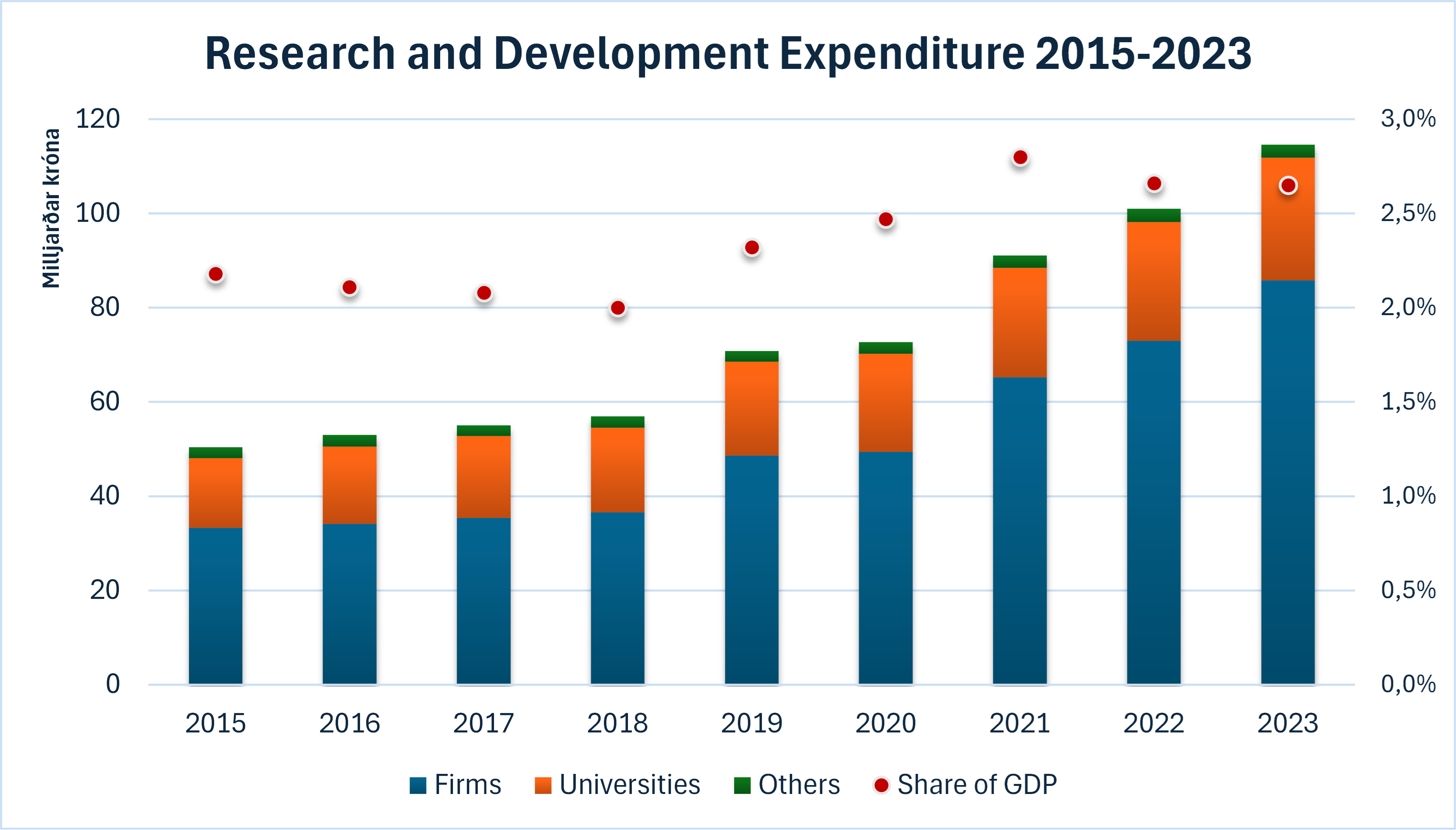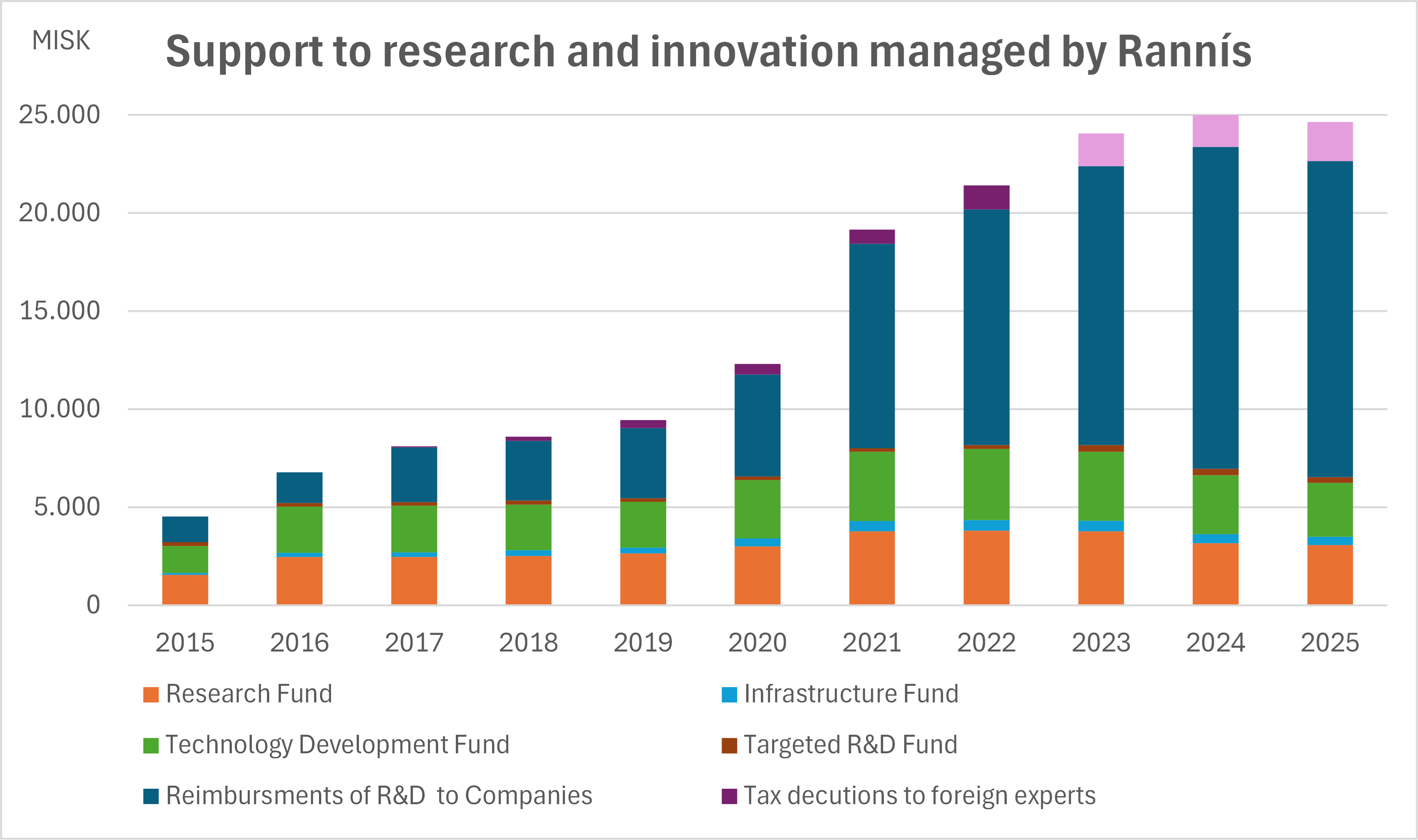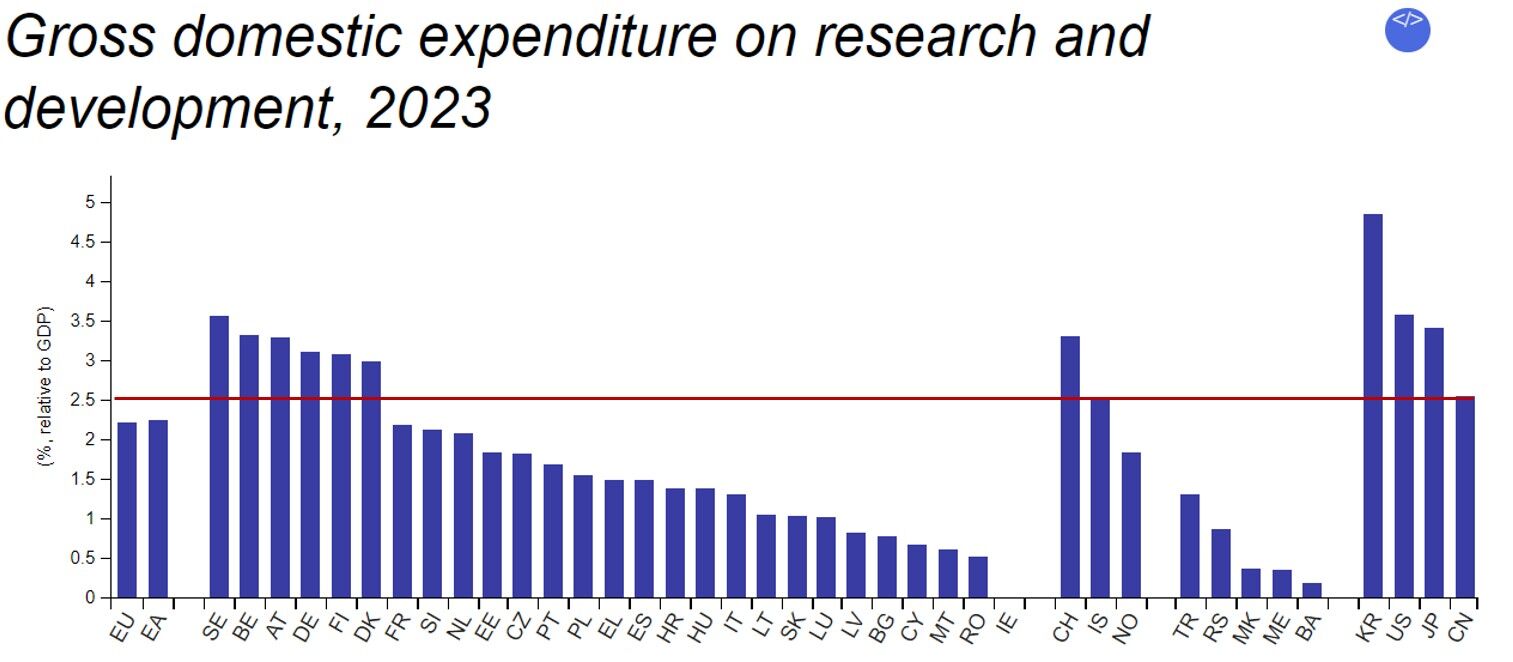🇮🇸 Research and development expenditures in Iceland continue to increase
Research and development (R&D) expenditures continued to grow significantly in 2023, reaching over 114 billion ISK. Since 2018, expenditures have doubled, primarily driven by increased corporate investments in R&D, which have more than doubled over five years. Public support appears to have had a stimulating effect, as grants for innovation companies tripled from 2018 to 2023.
Statistics Iceland has published data on total R&D expenditures for 2023, which show a continued year-on-year increase. A total of 114 billion ISK was allocated to R&D in 2023, equivalent to 2.65% of the gross domestic product (GDP). The increase in expenditures thus aligns closely with GDP growth. The nominal increase from the previous year was 13.6 billion ISK. In 2018, R&D expenditures amounted to 56.9 billion ISK (2.01% of GDP), meaning that in five years, expenditures have increased by 57.7 billion ISK—a growth of over 100%.

Source: Statistics Iceland
Corporate Sector Drives Growth
As shown in the accompanying data, the increase is largely due to expanding R&D activities in the corporate sector. Businesses accounted for 75% of total R&D expenditures in 2023, with their spending increasing by 12.8 billion ISK from the previous year. University expenditures increased by 900 million ISK, while spending by other public institutions saw a slight decline. A more detailed breakdown is provided in the table below.

Source: Statistics Iceland
Public Support for R&D and Innovation
Public support for research and innovation has grown in recent years, as seen in the graph illustrating the development of funding for major R&D programs and grants for innovation companies from 2015 to 2024. This increase has undoubtedly contributed to the expansion of R&D, especially within companies. A clear correlation can be observed: between 2020 and 2021, reimbursements of R&D costs to companies doubled from 5.2 billion to 10.4 billion ISK. This investment appears to have paid off significantly, as businesses expanded their R&D activities by more than three times that amount—by approximately 15.8 billion ISK. While subsequent changes were not as dramatic, the correlation remains evident: reimbursements increased by 1.6 billion ISK in 2022 and by 2.2 billion ISK in 2023, while corporate R&D expenditures rose by 7.8 billion ISK in 2022 and 13.6 billion ISK in 2023.
Source: Rannís
Iceland Strengthens Its Position in Europe
Iceland has significantly improved its position compared to other European countries in recent years and maintained this standing in 2023. The average R&D expenditure across the 27 EU countries was 2.22% of GDP in 2023, with no growth in the past three years. Sweden had the highest R&D expenditure in 2023 at 3.58% of GDP, reclaiming the top position from Belgium (3.33%). Austria followed at 3.30%, and Germany at 3.11%. Iceland ranked seventh among European nations, maintaining its position from previous years. No other European country has seen as rapid an increase in R&D spending as a percentage of GDP over the past five years as Iceland.
Source: Eurostat
Future Outlook
According to these data, Iceland’s research and i
nnovation environment has strengthened in recent years, and its position in international comparisons is relatively strong. However, the country has yet to reach the long-standing government target of 3% of GDP allocated to R&D. Given the trends of recent years, it is reasonable to expect that Iceland’s R&D expenditures could reach 3% of GDP by the end of this decade.
Ágúst H. Ingþórsson, Director General of Rannís
Originally published on 10 April by Rannís.
Announcements are published as a service to readers. The sender is responsible for all content.
Announcements for publication can be submitted to in**@ar*********.com.


